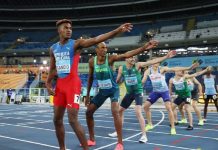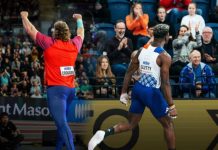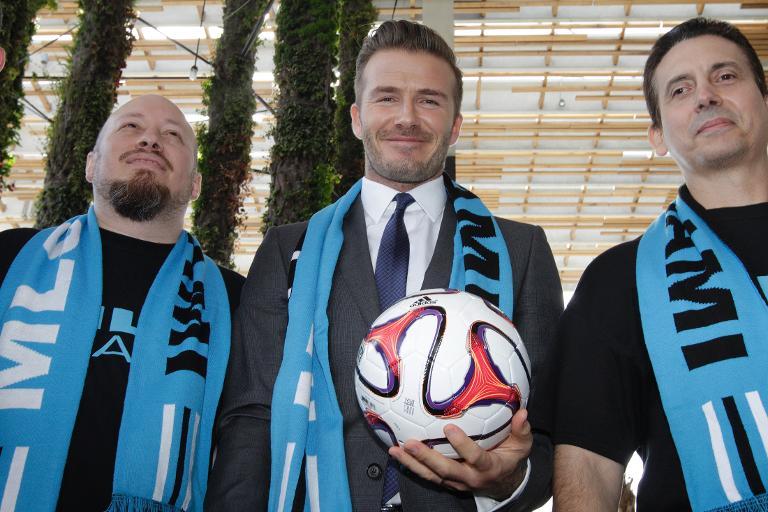 World Athletics has today announced the launch of a 3D virtual museum of athletics, bringing a new level of innovation and creative technologies to the world of sport.
World Athletics has today announced the launch of a 3D virtual museum of athletics, bringing a new level of innovation and creative technologies to the world of sport.
Known as MOWA, the Museum of World Athletics™ is the first sports museum to be established solely in the digital world.
It offers visitors an interactive journey through the history of athletics and the sport’s flagship World Athletics Championships, highlighting many of the legends of the sport.
The museum gives visitors a unique online experience, highlighting key athletics champions from each continent, and celebrating each edition of the World Athletics Championships, through realistic interactive content, including items donated by the athletes which help to tell the story of the sport.
Among the exhibits are items owned by many of the greatest athletes in history, including Paavo Nurmi, Jesse Owens, Fanny Blankers-Koen, Irena Szewinska, Carl Lewis, Marie-Jose Perec, Jan Zelezny, Allyson Felix and Usain Bolt.
World Athletics President Sebastian Coe said MOWA was the perfect platform to showcase the extensive heritage of athletics, a foundation sport and the No.1 Olympic sport.
“We are delighted to be the first international sport federation to bring a 3D virtual sports museum to a global audience,” Coe said. “Through MOWA, sport and museums fans from around the world will, without the geographical limitations of a physical location, be able to discover the fascinating history of athletics, and the amazing achievements of our athletes. It is particularly exciting to launch this project at a time when the pandemic has limited the ability of fans to attend sporting events or visit museums in person.
“Athletics is the most accessible and diverse sport in the world and we were keen for the museum to reflect that by making the platform accessible to everyone, no matter where you are and what device you use.”
Smooth and immersive visitor experience
To create the museum, World Athletics worked with digital sport company dcSPORT, led by Olympic gold medallist and 2004 world indoor 60m champion Jason Gardener, who brought his expertise and passion for the sport to the project.
Through cutting-edge 3D technology, MOWA is designed to look and feel like a real building with stunning rooms that create an amazing and engaging real-life feel.
The journey begins by entering through a large reception hall, which features the six continental displays, before moving through an ‘Origins Tunnel’ which follows athletics’ 3000-year journey from antiquity to the modern day, and arriving at the ‘World Championships Room’, which features all 17 editions of World Athletics’ flagship championships.
The visitor can roam around the museum freely and interact with more than 60 exhibits and more than 400 items of supporting content: text, photos and video.
One of the biggest technical challenges was to build a digital environment where the modelling of the memorabilia donated by the athletes would look real. To ensure that the photographic reproduction and the graphics quality and clarity were perfect, all the artefacts, including competition uniforms, spike shoes and medals, were photographed in 360 degrees with a picture taken every 10 degrees, using a total of 36 images per item. The clarity of the graphics and the quality of the photographic reproduction is state of the art.
New donations announced for the MOWA opening
To celebrate the opening of MOWA, World Athletics is also delighted to announce new donations from two of the most celebrated athletes of the 20th Century, 1960 Olympic 1500m champion Herb Elliott of Australia and 1983 world marathon champion Grete Waitz of Norway.
Elliott has placed on long-term loan the Australian singlet and number he wore to triumph at the 1960 Rome Olympic Games, setting a world record which stood for almost seven years. Waitz’s husband and coach Jack Waitz has donated Waitz’s autographed 1982 season running shoes.
“I am proud about Grete’s contribution to women’s running,” confirmed Jack Waitz. “The whole situation was changed in Norway. Women dared to go out to run and dared to go out to run road races.”
Two World Athletics Heritage Plaques are also being awarded, posthumously, to Elliott’s charismatic coach Percy Cerutty and to Waitz, who died of cancer in 2011, aged just 57. The Cerutty plaque is to be located in Portsea in Australia, where he ran his famously spartan ‘Stotan’ training camps, and the Waitz plaque is proposed for Bislett Stadium in Oslo, where she twice broke the world 3000m record.
“I would not be who I am or where I am without the lucky accident of meeting Percy when I was still at school,” reflected Herb Elliott. “He was highly inspiring. To hear Percy talk, you wanted to go out and shake the trees and shake the world.”
Demonstrating the unmatched universality of athletics, the museum features athletes from more than 30 countries and all six continental areas. The six areas (Africa, Asia, Europe, North and Central America, Oceania and South America) each have a section devoted to the history of athletics in their region.
The museum includes other carefully thought out details such as the lines of an athletics track on the virtual floor to guide visitors, and even features the shadows of the objects, providing a convincingly immersive experience for sports and museum fans.
The project took six months to bring to life and was designed with the capacity to evolve over time. World Athletics will continue to add new features and galleries regularly, beginning with an Olympic exhibition, which will open in July, before the Tokyo Olympic Games commence.
The Museum of World Athletics™ (MOWA) is now available for free, with commentary provided in both English and French languages. The Museum is hosted by the official World Athletics website and is accessible at www.worldathletics.org/mowa



































